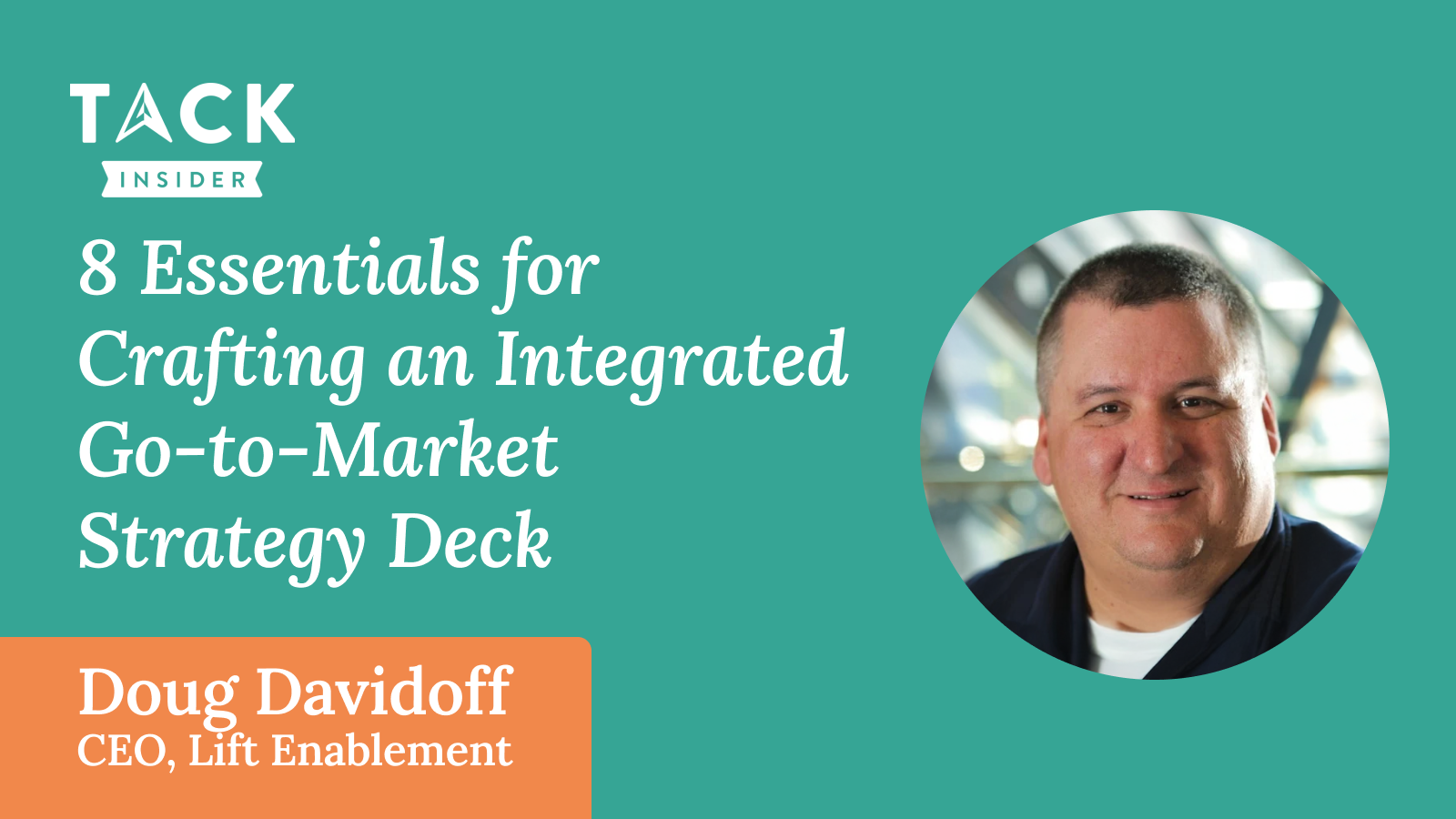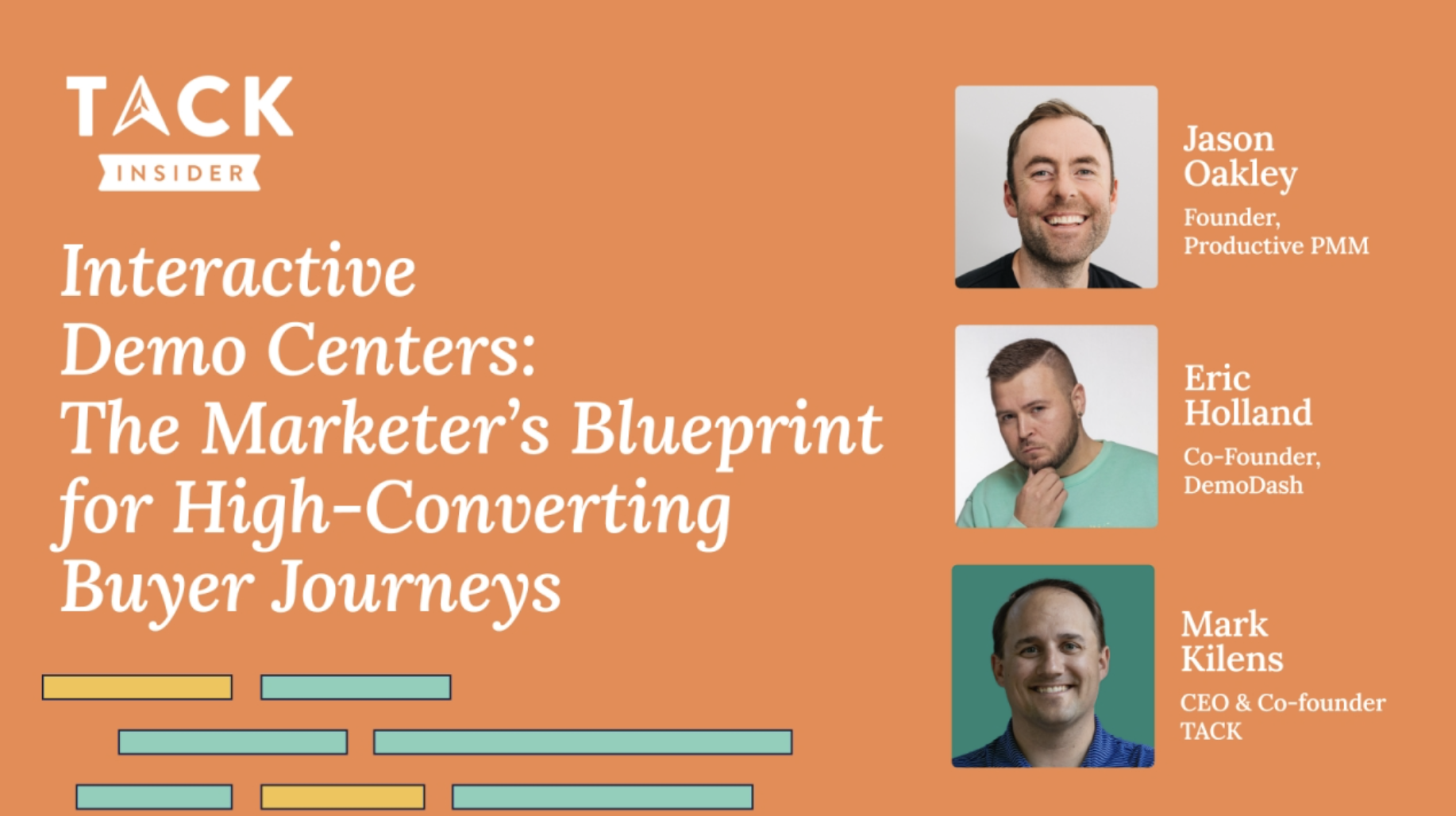Hosted by: Mark Kilens, CEO & Founder at TACK
Speakers: Doug Davidoff, CEO, Lift Enablement
Overview
Integrated go-to-market (GTM) strategy is what separates companies that accelerate from those that stall. Doug Davidoff (founder of Lift Enablement and author of The Revenue Acceleration Framework) unpacks the end-to-end blueprint for making integration actually work across sales, marketing, product, and RevOps.
What follows isn’t theoretical. It’s a practical breakdown of the principles, frameworks, and questions that will help your team move in sync, from campaign planning to performance measurement, based on how customers really buy today.
Check out the full slides of the webinar
1. Define Your Game Before You Play It
Most GTM dysfunction stems from one root problem: teams don’t actually agree on the game they’re playing. Before you talk tactics, you need to align on the fundamentals—your economic model, sales model, and who you’re really trying to be a hero to.
- Is your model PLG, enterprise sales, or something in-between? Stop borrowing plays that don’t match.
- Segment by customer problem, not just product feature.
- Anchor every campaign in this question: “Who do we want to be indispensable to?”
- Don’t let the market define you—clarity creates distinction.
“Good is no longer good enough. Playing someone else’s game guarantees friction—and failure.”
2. Organize Cross-Functional Teams Around Buyer Needs
Campaigns don’t succeed or fail in a vacuum—they’re affected by how your team is structured. Drawing from a Forrester model, the speakers emphasize the importance of mapping campaigns across three strategy layers:
- Market strategy: Where are we playing? What segments matter most?
- Buyer strategy: Which buyers and problems are we targeting?
- Engagement strategy: Who needs to be involved to activate this campaign (AMs, execs, CS, etc.)?
Don’t just assign a campaign to “marketing.” Map out who owns what—from planning to measurement—and build for internal orchestration, not just external output.
3. Align Customer Journey with Front and Back Stage
A great campaign feels seamless to the customer—but that’s only possible if your backstage operations (RevOps, data, processes) are just as integrated as your front-end touchpoints.
- Treat the journey like a theater: the backstage (RevOps) enables a flawless front stage (customer experience).
- Map each stage of the journey: what happens, who owns it, and how marketing becomes sales.
- Silos aren’t the enemy—misaligned silos are. Specialization is good when it’s coordinated.
4. Build Campaign Messaging Across Multiple Altitudes
Every campaign needs a story, but that story should ladder up to your brand, solution, and product narratives. The Airmeet example lays out five levels of messaging, from brand promise to specific product features.
- Identify the altitude: Are you running a brand, solution, or product campaign?
- Tie each level of the message to value. Don’t stop at features—connect to business outcomes.
- Use consistent messaging to unify silos and reduce campaign dissonance.
- Include RevOps early to execute, measure, and learn.
5. Brief, Act, Adjust: The Backbone of Execution
Integrated campaigns demand shared context—and that starts with a solid campaign brief. Whether your team is 7 or 700, the brief should unify your brand message, target audience, offers, and execution plan.
- Always define a trigger event. No campaign should exist “just because.”
- Distinguish between unaware, aware, marketing interested (MI), and sales-qualified (SQL) leads.
- Align marketing and sales actions by account. Outreach should match the story.
- RevOps must be part of the setup—not an afterthought.
6. Measure the Right Things, Not Just the Easy Things
Dashboards won’t save you if you’re tracking the wrong metrics. Focus less on lead volume and more on velocity and conversion—especially early in the funnel.
- The five metrics that matter: volume, conversion, velocity, value, cost.
- Prioritize signals of engagement before intent.
- Create cross-functional friction review teams. Not all friction is bad—some protects value.
- Set waypoints. In stormy conditions, shorten the distance between goals.
7. Why Most RevOps Initiatives Fail
RevOps isn’t just a role—it’s a strategic discipline. And when it’s missing or misaligned, even the best campaign collapses under its own weight.
Top failure points include:
- No upstream planning: Solving for execution without clarifying purpose adds hidden drag.
- Inflexible data architecture: Clean data is meaningless if your structure doesn’t match your needs.
- Half-decisions: Integration requires full commitment. Indecision is costlier than choosing wrong.
- Message confusion: Companies often compete with themselves. Focus beats variety.
8. The Compounding Cost of Not Integrating
The most sobering stat? A 19% drag on growth and margin for companies with poor integration. That’s not just lost revenue—it’s lost momentum, alignment, and learning.
- Integration is a strategic choice, not a tooling issue.
- Upstream misalignment always creates downstream chaos.
- You can’t fix strategy with tactics.
Key Takeaways
- Start with clarity: define your game, segment your customer, and pick your metrics.
- Structure campaigns across altitudes—brand, solution, product—with consistent messaging.
- RevOps is not optional. It’s the backstage that powers the show.
- Don’t optimize fragments—optimize the whole.
- Document everything in campaign briefs, then brief → act → adjust.





